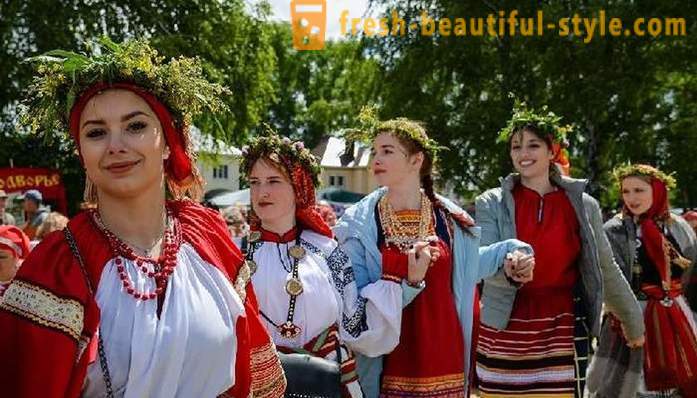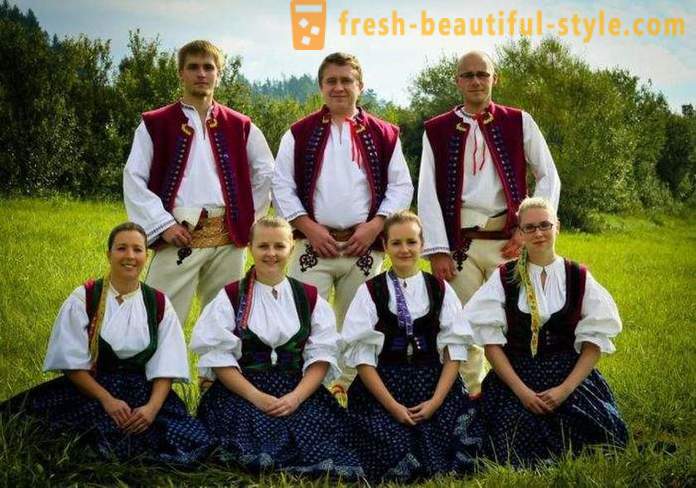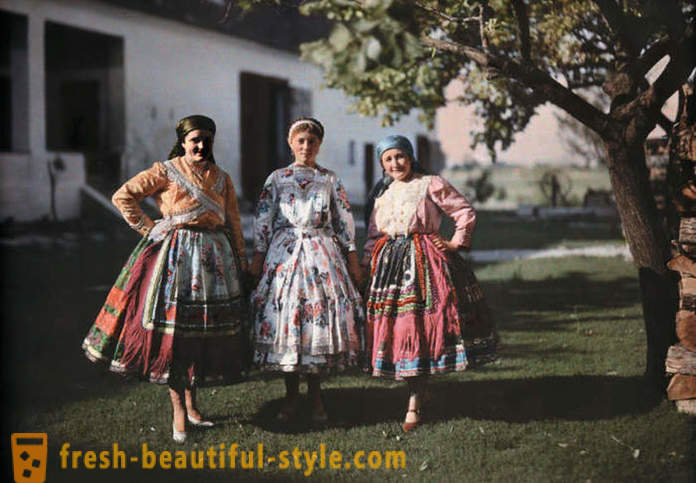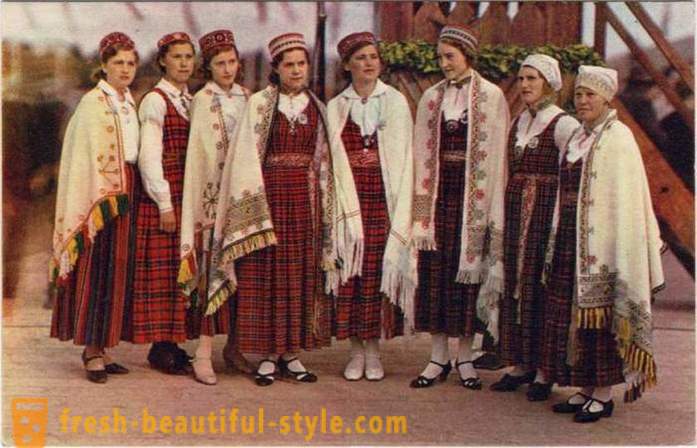Non-Slavic peoples, in which the most "Slavic blood"
The first written evidence of the Slavic tribes date back to the I century BC. e. This information is accurate as found in the Roman and Byzantine sources - by the time these civilizations already had their own written language. Science still does not give accurate answers, and where there was Slavic ethnic group, but it is known that with a V, and approximately the VIII. at. Slavic tribes participated in the mass resettlement of peoples. The migration began from the territory of Carpathian upper reaches of the Dnieper and the middle Dnieper region, extending to the west, south and north-east. Slavs have left their mark in the formation of the ethnogenesis of many modern nations. This is reflected in the culture, language, anthropology, and place names.

Modern German Slavic roots

Germany not only has historical Slavic roots, on its territory are still living descendants of the ancient tribe of Sorbs, occupying part of the land of Saxony and Brandenburg (Lausitz region). This is not Germanized before the end of the people of the so-called radical Slavic enclave, promotes preservation of Sorbian language and culture of their ancestors and national identity.
Sorbs and other Slavic tribes arrived in Germany from the territory of the modern Czech Republic, Slovakia and southern Poland. During mass resettlement of peoples Slavs occupied the empty Polabian and Pomeranian lands where Germans migrated to the south. Here they existed tribal unions, strongholds erected, developed craft were engaged in agriculture and trade.
The main places of habitation were modern Sorbs Leipzig, Dresden, Chemnitz and Cottbus. To the north of them lived in the tribal alliance lutici (Wiltz), occupying the territorial space between the Elbe and the Oder. Most Western Union Polabian tribes were bodrichi or Obodrits. They settled in the lower reaches of the Elbe River in present-day Shlezvinga-Holstein, Lübeck and Mecklenburg. In the early stages of their coexistence (VI century), the Slavs and the Germanic tribes were at the same level of development. After moving to Gaul and northern Italy, Germans significantly improved cultural and technical potential. Entrenched in the south, the Germans gradually began to return control over northern Europe.
By the IX century, in spite of the existing feudal elite, Slavs still have not formed a state and remain fragmented, and Germans were already consolidated Union. Since the founding of the German States (919 years) began actively conquering Slavs German people. Over time, having no political rights, Slavic tribes dissolved in the German media, but left behind numerous place names. Most East German cities have Slavic origin Luebeck (Ljubica) Schwerin (Zverino) Gerlitz (Gorelets) Tzvetana (Flower), Leipzig (Lipsk), and others.
The influence of the Slavs ethnogenesis Hungary

The Hungarians belong to the Ural language family, their ancestors - warlike semi-nomads, pastoralists living in the steppes east of the Urals, in the present of the West Siberian Plain. The millennium I n. e. Hungarians moved to the lower reaches of the Kama River, where their presence is confirmed mounds and cemeteries Kushnarenkovsky culture, then they moved in the Black Sea and Azov steppes. In the VII century, in the area between the Kama and Samara have lived Slavs related to Imenkov culture. Archaeological data show prolonged and close contact "Slavic Imenkovs" Kushnarenkovsky and media culture. With this you can connect the presence of Slavism in the Hungarian language. Further its way from the Middle Volga region in Transylvania and Pannonia Hungarians committed when he was assimilated Imenkov Slavic culture. From Pannonia in the X-XI centuries the Magyars migrated to the fertile flat lands of its current country, which at that time lived mostly Slavic peoples. From that moment began a mixture of Hungarian and Slavic ethnic groups. In the Hungarian language, numerous Slavic borrowing, in particular, various agricultural terms (shovel, rake, Rye et al.).
According to scientists, the existence of a Slavic basis Imenkov culture to some extent helped to have come from Asia, the Magyars to adapt to the European civilization.
Why Baits - almost Slavs?

Baltic peoples, and in particular the Eastern Balts (Letto-Lithuanians) are the ancestors of the Lithuanians and Latvians. In doing so, the Balts were the indigenous population of the Baltic countries, they migrated to the south and forced the local Finno-Ugric peoples in the north of present-day Latvia.
Direct effect on the ethnogenesis of Balts had Slavs, as evidenced by numerous toponymic materials.
Name Venta River, which flows in Lithuania and Latvia, came from the Slavic tribe ventichey (Vyatichi or Wends), who lived in the south-eastern coast of the Baltic Sea. According to the earliest written records, the Baltic Sea at the time was called Venedskim bay. All attempts to find the roots of the word Balta were unsuccessful.
Casimir Lithuanian linguist Bug argued that not only the word Venta, but also a number of other hydronyms testify about the settlement by Slavs Letto-Lithuanian lands in times of large-scale migration of peoples (in V-VI in. In.). About 600 cities and towns in Latvia have a Slavic origin, more than 1,500 Latvian words - common language with Russian roots, prefixes and suffixes.
The symbiosis of Slavs and Romanians

Romania - one of the Latins, who lives in the south-eastern part of Europe. Romanian ethnogenesis, formed under the influence of various nations, has several theories of origin and causes a lot of debate. According to the autochthonous (Dacian) theory, the foundation of the Romanian people were Dacian tribes (the inhabitants of the Roman province of Dacia), subjected to Romanization in the II century BC. e. and perceive the spoken Latin. Proponents of the theory of migration deny Dacian continuity and believe that the Romanian ethnic group originated south of the Danube and in the XII century, its speakers moved to Transylvania, where at that time were living in Hungary.
Despite the contradictory hypotheses, representatives of most scientific fields converge in one - the final stage of Origin of the Romanians suffered a strong influence of the Slavs, which started with a period of great resettlement of peoples in the VI-VII centuries. Slavic peoples migrated across the land of the former Roman Dacia, and settled next to the Daco-Romans, partly mixed with them. Hence it tracked the correlation of the Romanian vocabulary, phonetics and grammar of Slavic languages. It is not about individual borrowing, but the whole thematic layers. About 20% of the modern Romanian language constitute Slavonicisms.
The invasion of the Slavs in Greece

The main invasion of the South Slavs in Greece began in the VI century and was completed after the accession to the throne of the emperor Heraclius. Slavic tribes settled throughout the territory of Greece and in the archipelago. In some places, there were so many, that in later historical documents, these lands were called Slavic. The intensity of the invasion was not so high as to speak of the destruction of the descendants of the Greeks and the creation of the Slavic Greek, but the strong influence of the Greek people on the ethnogenesis can not be denied.
Slavic gospodstvovanie completed in the X century, when Greece was again conquered by the Byzantine Empire - alien nations rapidly assimilated and have been almost completely absorbed by the native population. According to research in 2008, the number of unassimilated indigenous Slavs in Greece was more than 30 thousand. Man.













































